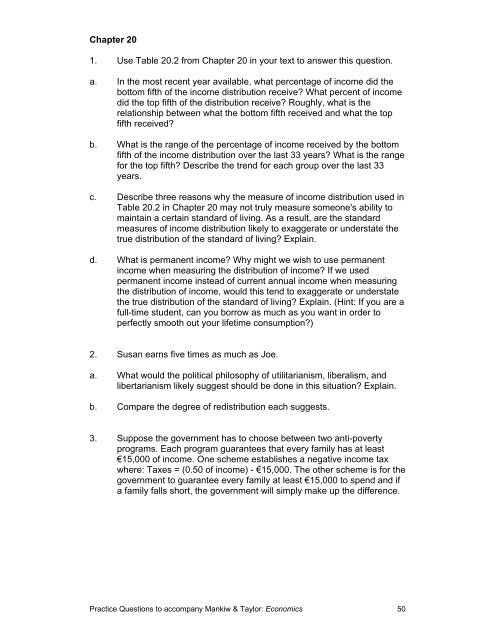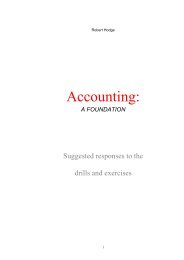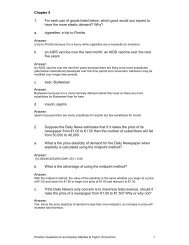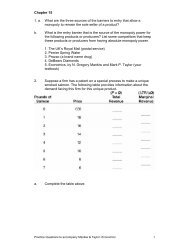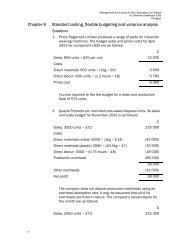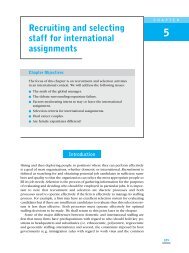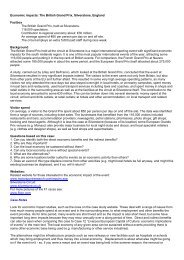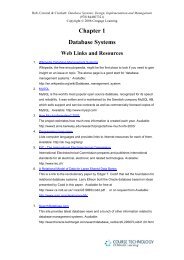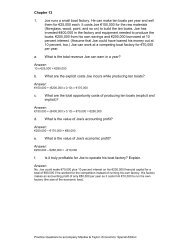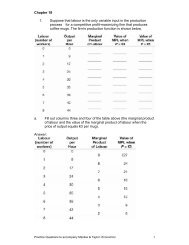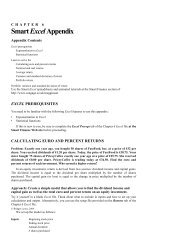Practice Questions Chapter 1 1. People respond to incentives ...
Practice Questions Chapter 1 1. People respond to incentives ...
Practice Questions Chapter 1 1. People respond to incentives ...
- No tags were found...
Create successful ePaper yourself
Turn your PDF publications into a flip-book with our unique Google optimized e-Paper software.
<strong>Chapter</strong> 20<strong>1.</strong> Use Table 20.2 from <strong>Chapter</strong> 20 in your text <strong>to</strong> answer this question.a. In the most recent year available, what percentage of income did thebot<strong>to</strong>m fifth of the income distribution receive? What percent of incomedid the <strong>to</strong>p fifth of the distribution receive? Roughly, what is therelationship between what the bot<strong>to</strong>m fifth received and what the <strong>to</strong>pfifth received?b. What is the range of the percentage of income received by the bot<strong>to</strong>mfifth of the income distribution over the last 33 years? What is the rangefor the <strong>to</strong>p fifth? Describe the trend for each group over the last 33years.c. Describe three reasons why the measure of income distribution used inTable 20.2 in <strong>Chapter</strong> 20 may not truly measure someone's ability <strong>to</strong>maintain a certain standard of living. As a result, are the standardmeasures of income distribution likely <strong>to</strong> exaggerate or understate thetrue distribution of the standard of living? Explain.d. What is permanent income? Why might we wish <strong>to</strong> use permanentincome when measuring the distribution of income? If we usedpermanent income instead of current annual income when measuringthe distribution of income, would this tend <strong>to</strong> exaggerate or understatethe true distribution of the standard of living? Explain. (Hint: If you are afull-time student, can you borrow as much as you want in order <strong>to</strong>perfectly smooth out your lifetime consumption?)2. Susan earns five times as much as Joe.a. What would the political philosophy of utilitarianism, liberalism, andlibertarianism likely suggest should be done in this situation? Explain.b. Compare the degree of redistribution each suggests.3. Suppose the government has <strong>to</strong> choose between two anti-povertyprograms. Each program guarantees that every family has at least€15,000 of income. One scheme establishes a negative income taxwhere: Taxes = (0.50 of income) - €15,000. The other scheme is for thegovernment <strong>to</strong> guarantee every family at least €15,000 <strong>to</strong> spend and ifa family falls short, the government will simply make up the difference.<strong>Practice</strong> <strong>Questions</strong> <strong>to</strong> accompany Mankiw & Taylor: Economics 50


